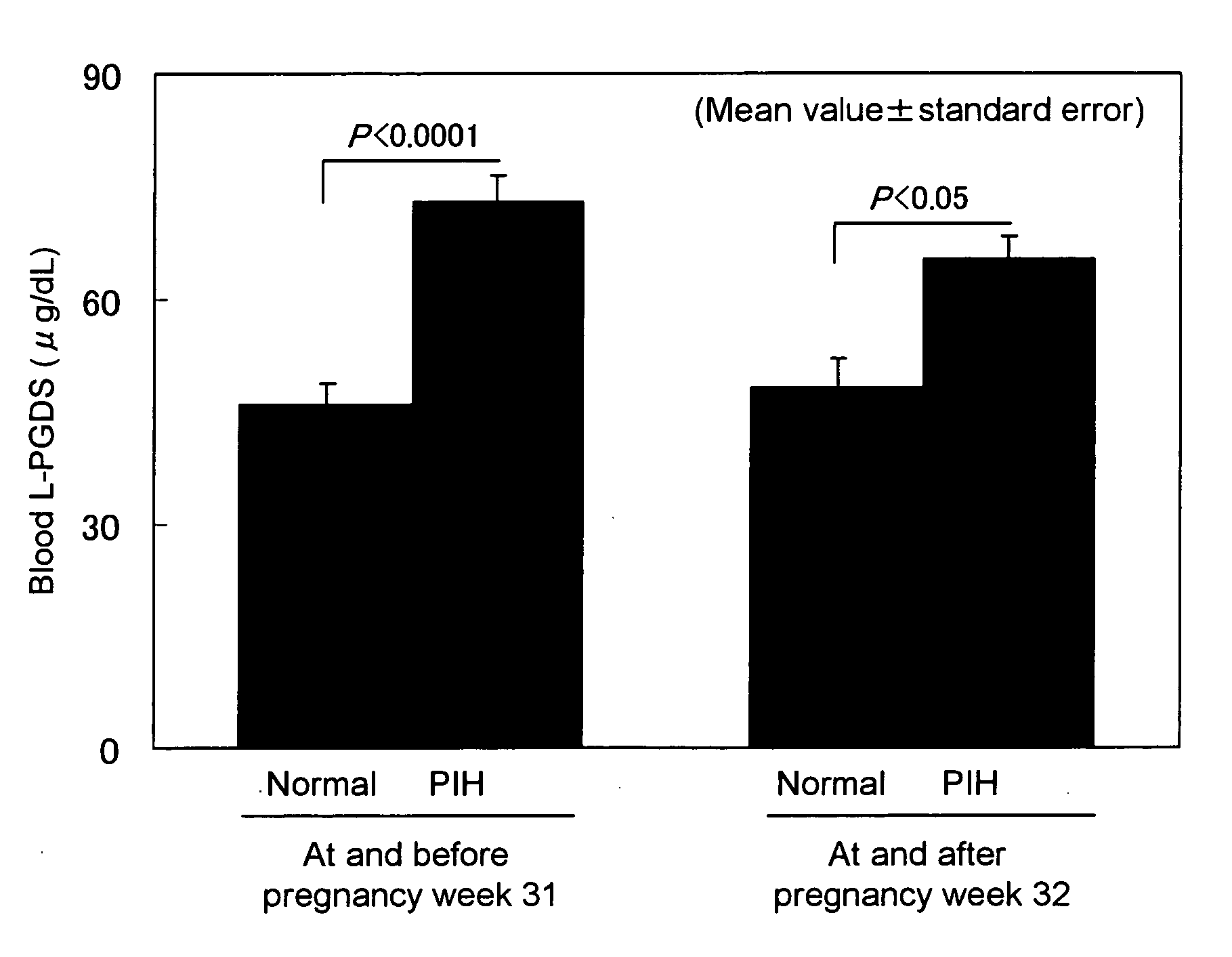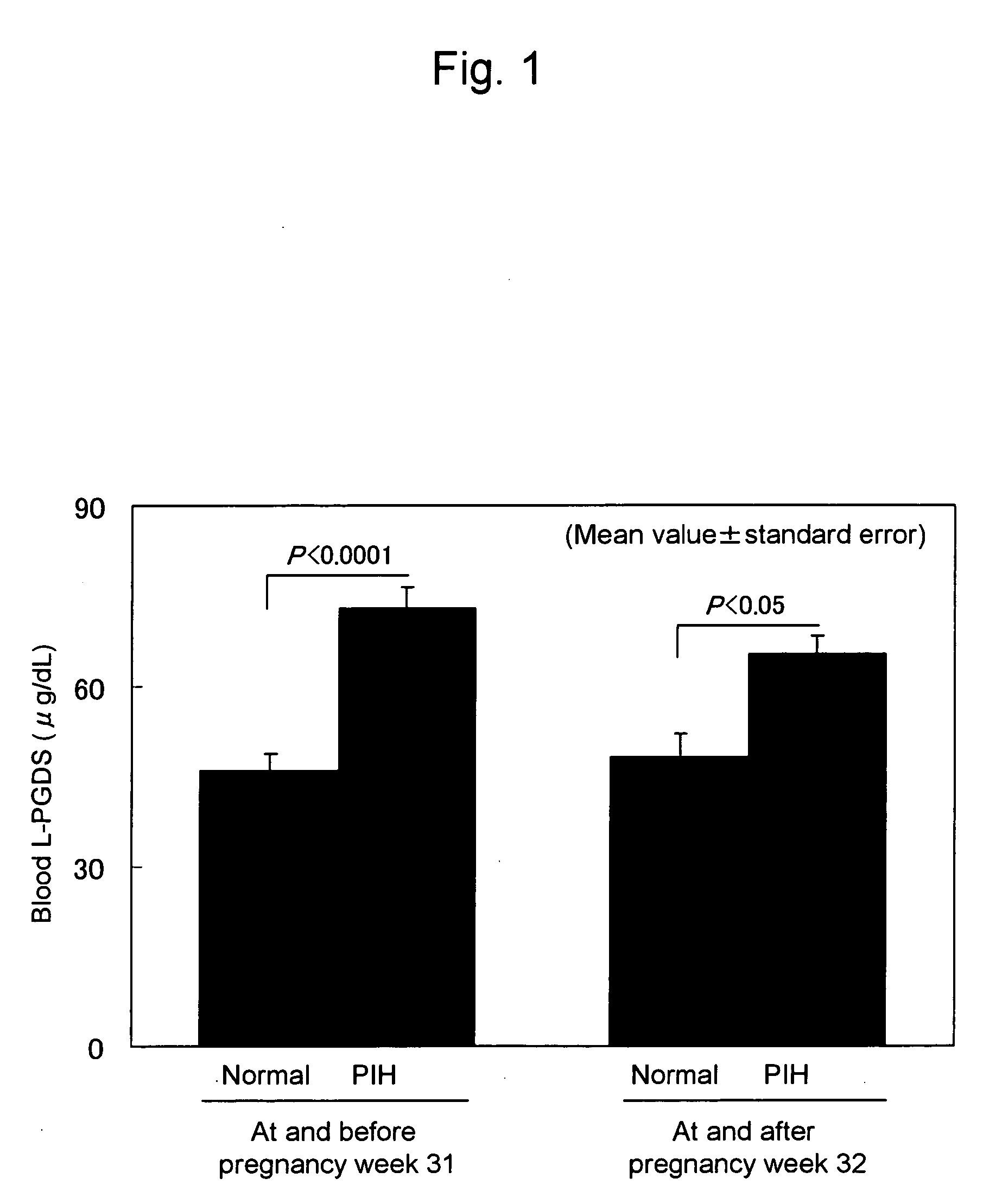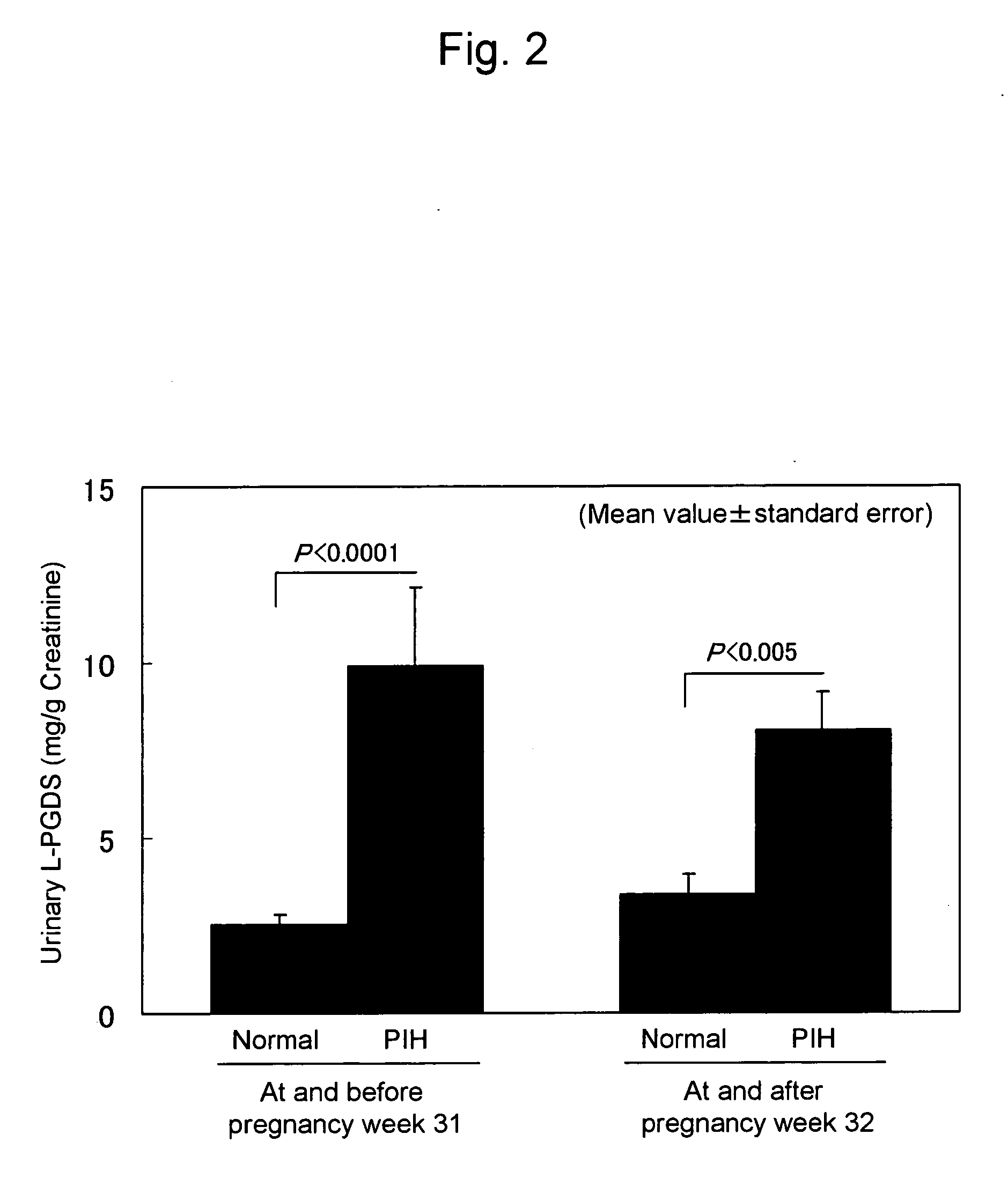Method of determining and prognosing severity of pregnancy toxemia and method of estimating fetus/placenta function under pregnancy toxemia
- Summary
- Abstract
- Description
- Claims
- Application Information
AI Technical Summary
Benefits of technology
Problems solved by technology
Method used
Image
Examples
example 1
[0055] Blood L-PGDS levels of normal pregnant women and pregnant women with PIH were measured. Subjects were divided into subjects at and before pregnancy week 31 and subjects at and after pregnancy week 32 depending on pregnancy stages. The blood L-PGDS levels of the normal pregnant women were compared with those of the pregnant women with PIH at each stage. FIG. 1 shows the results. Regarding the subjects at and before pregnancy week 31, the L-PGDS level was significantly higher (P<0.0001) in the PIH group (n=10, 72.8±3.8 μg / dL, mean value±standard error) than that in the normal group (n=14, 46.1 ±2.8 μg / dL, mean value±standard error). Moreover, regarding the subjects at and after pregnancy week 32, the L-PGDS level was also significantly higher (P<0.05) in the PIH group (n=10, 65.4±3.1 μg / dL, mean value±standard error) than that in the normal group (n=13, 48.3±3.8 μg / dL, mean value±standard error). Hence, it was concluded that at any pregnancy stage, a subject showing a high bloo...
example 2
[0056] The levels of L-PGDS excreted into an urine of normal pregnant women and pregnant women with PIH were measured. Subjects were divided into subjects at and before pregnancy week 31 and subjects at and after pregnancy week 32 depending on pregnancy stages. Spot urine specimens from the normal pregnant women and the pregnant women with PIH at each stage were collected. To correct for an influence of the urine volume, each urinary L-PGDS value was divided by urinary creatinine (L-PGDS / g creatinine). FIG. 2 shows the results. Regarding the subjects at and before pregnancy week 31, the L-PGDS excretion was significantly higher (P<0.0001) in the PIH group (n=10, 9.90±2.24 mg / g creatinine, mean value±standard error) than that in the normal group (n=14, 2.53±0.26 mg / g creatinine, mean value±standard error). Moreover, regarding the subjects at and after pregnancy week 32, the L-PGDS excretion was also significantly higher (P<0.005) in the PIH group (n=10, 8.03±1.11 mg / g creatinine, mea...
example 3
[0057] Blood L-PGDS levels of pregnant women with PIH at pregnancy weeks 26 to 38 were measured. Subjects were divided into subjects with mild-type PIH and subjects with severe-type PIH based on hypertension, proteinuria, edema, other clinical symptoms, and the like. The blood L-PGDS levels thereof were compared. As a result, as shown in FIG. 3, the blood L-PGDS level was significantly higher (P<0.01) in severe-type group (n=12, 71.9±3.6 μg / dL, mean value±standard error) than that in mild-type group (n=9, 52.4±4.8 μg / dL, mean value±standard error). Hence, it was concluded that PIH is likely to be severe when a patient with PIH shows a high blood L-PGDS level and that measurement of blood L-PGDS level is useful in determination of the severity of PIH.
PUM
 Login to View More
Login to View More Abstract
Description
Claims
Application Information
 Login to View More
Login to View More - R&D
- Intellectual Property
- Life Sciences
- Materials
- Tech Scout
- Unparalleled Data Quality
- Higher Quality Content
- 60% Fewer Hallucinations
Browse by: Latest US Patents, China's latest patents, Technical Efficacy Thesaurus, Application Domain, Technology Topic, Popular Technical Reports.
© 2025 PatSnap. All rights reserved.Legal|Privacy policy|Modern Slavery Act Transparency Statement|Sitemap|About US| Contact US: help@patsnap.com



